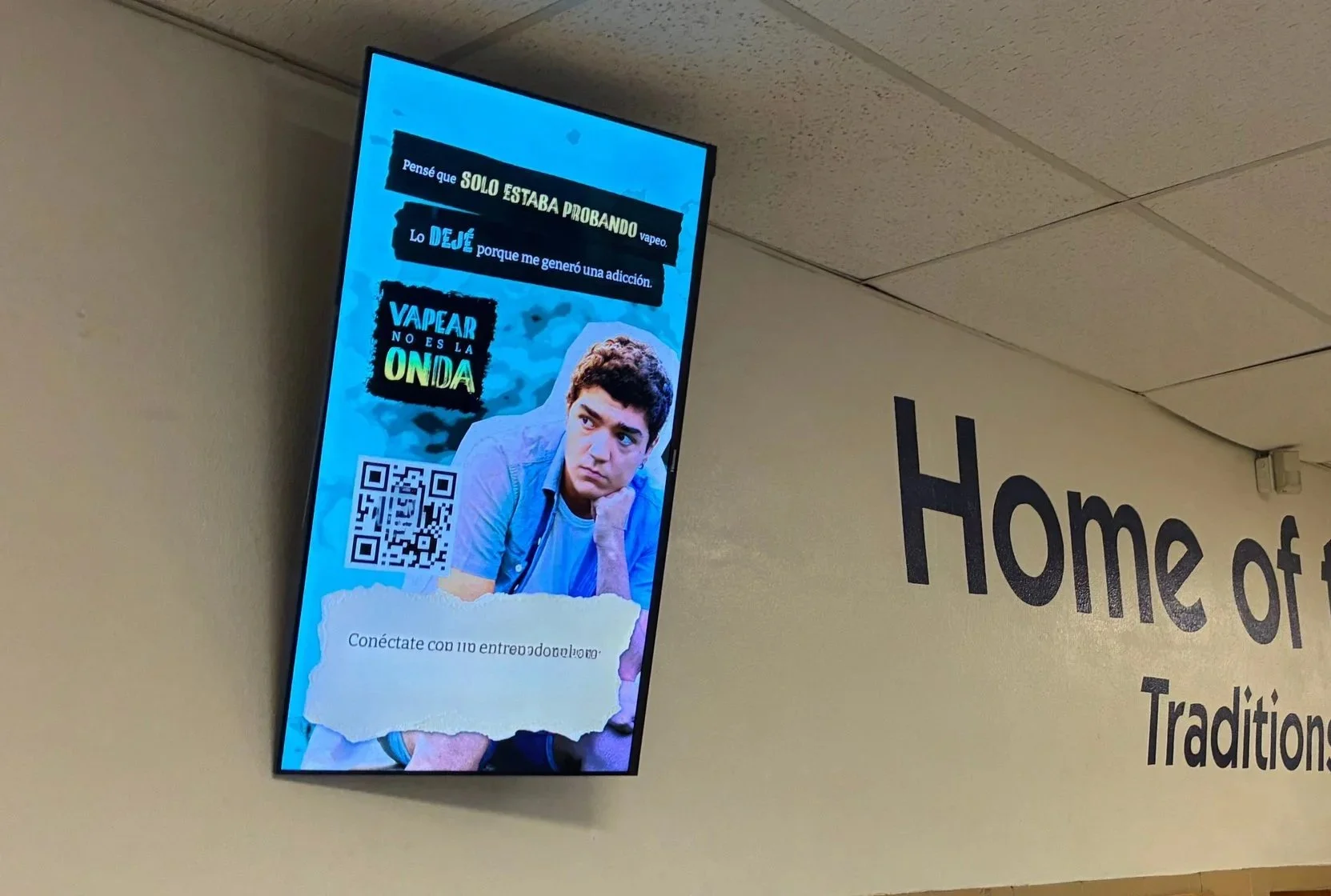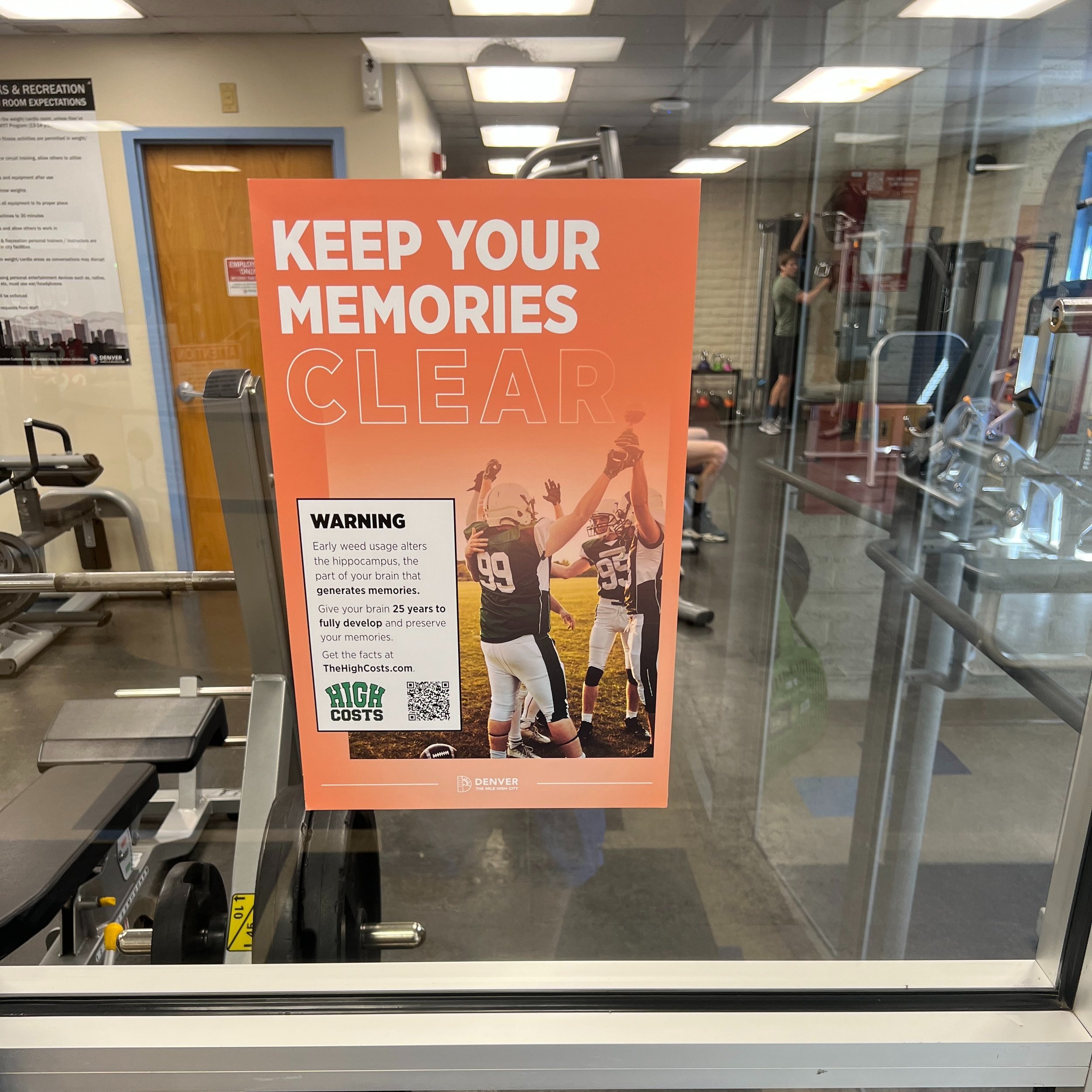High School Advertising
High School Out-of-Home (OOH) advertising offers a tangible and impactful way to engage with audiences. High schools, as centers of education and vibrant youth culture, provide a unique opportunity for brands to connect with the next generation of consumers. Explore the power of OOH advertising at high schools, its benefits, and strategies to effectively leverage this channel to create lasting brand impressions and build meaningful connections with students.

Understanding High School Advertising
Out-of-Home advertising at high schools refers to the placement of advertisements in strategic locations within school premises. This includes various formats such as billboards, posters, digital screens, banners, and signage positioned in high-traffic areas like corridors, cafeteria, gymnasiums, sports fields, and auditoriums. These advertising assets provide brands with a direct line of communication to engage with students, staff, parents, and the wider school community.
Targeted Youth Marketing
Targeted youth marketing through high school out-of-home advertising allows brands and public health campaigns to connect directly with a young, impressionable audience in their everyday environments. By strategically placing messages in high-traffic areas like hallways, cafeterias, and sports facilities, advertisers can effectively engage students with relevant content, fostering awareness and action on key issues such as health, education, and safety.
High School Advertising Influences Teenagers
High-school advertising creates repeated exposure to messages during the school day, leading to effective message retention. This approach positively influences young minds for decisions related to behavioral health, tobacco prevention, higher education, and more.

High-Visibility Messaging in the Heart of Campus
Our digital screens in high school gymnasiums and stadiums deliver dynamic, high-impact messaging in the heart of student and community life. Whether it’s during sports events, pep rallies, assemblies, or parent nights, these placements reach students, parents, staff, and local fans in an environment charged with energy and attention. Ideal for educational campaigns, college recruitment, community initiatives, and brand partnerships, these screens ensure your message stands out where it matters most.
How to Market to High School Students?
Marketers need to prioritize authenticity, creativity, and purpose-driven messaging to effectively reach high school students. The most effective strategies involve meeting students where they spend time—in high schools, recreational facilities, and on mobile devices. High school students respond well to campaigns that are funny, relatable, and tied to causes they care about, such as mental health or community impact.
It’s also important to recognize the multicultural makeup of today’s student population, particularly the growing influence of Hispanic youth. Campaigns that reflect cultural diversity, highlight bilingual elements, or showcase relatable role models resonate more strongly and build trust. Multicultural and Hispanic-focused messaging not only expands reach but also ensures students feel authentically represented.
Learn more about creative strategies for teens here.
Benefits of High School Advertising:
Targeted Reach: High schools offer a captive audience of students, educators, and parents, allowing for precise targeting based on age, interests, and demographics. OOH advertising ensures that brand messages reach a concentrated group of individuals with high potential for engagement.
Long-lasting Impressions: Unlike fleeting digital ads, OOH advertising at high schools provides a physical presence that remains visible for an extended period. Students and staff interact with these ads repeatedly, reinforcing brand recall and creating lasting impressions.
Influence: High schools play a significant role in shaping students' perceptions and behaviors. OOH advertising allows brands to position themselves as influential entities within the school environment, positively impacting brand perception and influencing consumer choices.
Contextual Relevance: By aligning with the school environment, OOH advertising can deliver contextually relevant messages. This can include promoting educational resources, career opportunities, health and wellness initiatives, community engagement, or supporting school events.
Brand Association: When brands associate themselves with high schools through OOH advertising, they establish a sense of community engagement and social responsibility. This association fosters positive brand sentiment among students, parents, and the school community, contributing to brand loyalty and advocacy.
High School Advertising Strategies:
Research and Targeting: Conduct thorough research to understand the school's culture, values, and demographics. Identify key touchpoints within the school premises to maximize visibility and engagement. Tailor your messaging to resonate with the specific interests and needs of the target audience.
Creative and Engaging Content: Develop visually appealing and captivating creative assets that grab attention and spark curiosity. Incorporate bold imagery, concise messaging, and compelling calls to action that inspire students to take notice and engage further.
Integration with School Activities: Seamlessly integrate OOH advertising with school activities, events, and initiatives. This can involve sponsoring sports teams, academic competitions, or cultural festivals, and leveraging OOH ads to highlight the partnership and support.
Digital Integration: Consider incorporating digital elements into OOH advertising at high schools. This can involve the use of QR codes, augmented reality, or interactive displays to provide an enhanced experience for students, allowing them to engage with the brand beyond the physical ad.
Placement and Timing: Identify high-traffic areas within the school premises for optimal placement of OOH advertising. Consider areas near cafeterias, sports facilities, or common gathering spots. Additionally, align campaigns with significant events or seasons relevant to the high school community.
“58% of teens have taken action after seeing OOH ads.”
(Research conducted by Nielsen)
How to Advertise to High School Students?
Looking for an impactful way to reach high school students? In this guide, we will delve into the world of Out-of-Home (OOH) media and explore its potential to reach the attention of this demographic.
High School Advertising FAQs
What is high school advertising?
High school advertising involves marketing campaigns or promotional activities directed towards high school students, faculty, or parents, typically within the school environment or through channels commonly accessed by the high school demographic.
Why is advertising in high schools important?
Advertising in high schools can be important for organizations targeting the youth market. It provides an opportunity to build brand awareness and loyalty among teenagers, an influential consumer group.
What are the most effective methods for advertising in high schools?
Effective methods include digital advertising on platforms popular among teenagers, sponsoring out-of-home (OOH) displays, school facilities, or educational partnerships, and engaging interactive campaigns that resonate with the youth.
How do advertisers ensure their content is appropriate for a high school audience?
Advertisers must adhere to ethical standards and guidelines, ensuring content is age-appropriate, non-intrusive, and respectful of the educational environment.
What role do social media and influencers play in high school advertising?
Social media and influencers are significant in high school advertising, as they are highly influential in teenagers' lives. Campaigns leveraging these channels often see higher engagement, relevance, and tend to compliment high school advertising campaigns.
How can advertisers measure the success of their high school advertising campaigns?
Success can be measured through engagement metrics, feedback from the school community, and the campaign's impact on brand perception and recall among the target demographic.
How do high school advertising strategies differ from those targeting other age groups?
High school advertising often requires more engaging, focusing on trends, with youth focused creative, and peer influences, which differ from strategies used for other age demographics.
What is the role of ethics in high school advertising?
Ethics play a crucial role in ensuring that advertisements are not exploitative, misleading, or detrimental to the educational and developmental needs of high school students.












